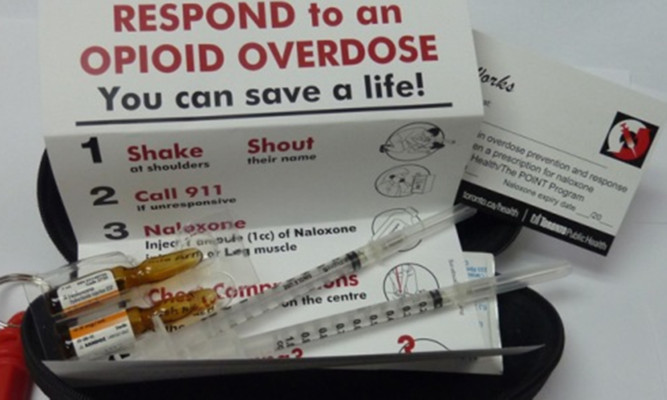The number of drug overdose prevention kits issued in the past year has risen by around 10%, according to official figures.
The National Naloxone Programme gave out 3,833 take-home naloxone kits in 2012-13, compared with 3,458 kits in 2011-12, an increase of 375 (10.8%). The rise has been welcomed by both the Scottish Government and the Scottish Drugs Forum (SDF).
Scotland was the first country in the world to introduce a national naloxone programme, in November 2010, which is co-ordinated and funded by the Government.
The kits enable individuals to reverse a potentially fatal opiate overdose by administering naloxone, providing more time for an ambulance to arrive.
Community Safety Minister Roseanna Cunningham said: “While drug use among the general adult population and young people has decreased, there remains an older group of people with problem drug use who now also face a range of other health problems, placing them at increased risk of overdose and death.
“We are determined to tackle this issue and support these vulnerable people. The naloxone programme is a key part of this.
“While not a solution to drug deaths in itself, this programme is an important intervention within a range of available treatment and support, which can help reduce harm and support people towards recovery. That is why we are committed to increasing the availability of take-home naloxone kits and undertaking robust monitoring and evaluation to enable us to measure the effectiveness of this programme in the longer term.”
Andrew McAuley, public health adviser for substance misuse at NHS Health Scotland, said the figures show that progress has been made in implementing the programme across the country over the past year.
“The Scottish National Naloxone Programme, the first of its kind anywhere in the world, is an important development in preventing drug-related deaths for some of the most vulnerable individuals in our society.”
The SDF, which helps deliver the kits, said the figures suggest they are making a positive impact. The organisation wants it to cover 40% of the population of problem drug users in the long term.
David Liddell, director of SDF, said: “With 365 opiate overdose reversals in the past two years, it’s clear that a significant number of lives potentially have been saved.
“The programme is still in its infancy and there is a need for a much higher level of distribution among opiate users.”
